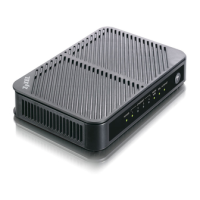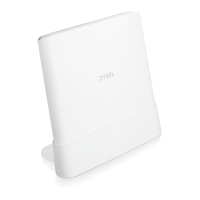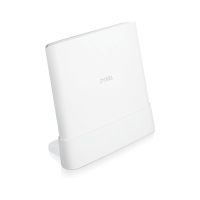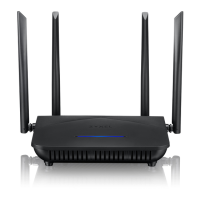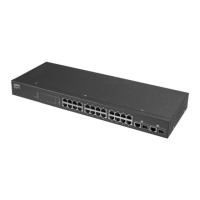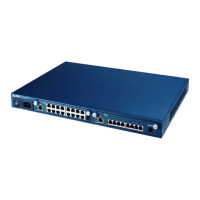Chapter 9 Wireless
VMG/EMG/AM/DM/GM Series User’s Guide
215
The following table describes the general WiFi labels in this screen.
Table 43 Network Setting > Wireless > General
LABEL DESCRIPTION
Wireless
Wireless Select Keep 2.4G and 5G wireless network name the same and the 2.4 GHz/5 GHz WiFi networks
will use te same SSID and wireless security settings.
Wireless/WiFi Network Setup
Band This shows the WiFi band which this radio profile is using. 2.4GHz is the frequency used by IEEE
802.11b/g/n/ax WiFi clients, 5GHz is used by IEEE 802.11a/n/ac/ax WiFi clients.
Wireless/WiFi Click this switch to enable or disable WiFi in this field. When the switch turns blue, the function is
enabled. Otherwise, it is not.
Channel Select a channel from the drop-down list box. The options vary depending on the frequency
band and the country you are in.
Use Auto to have the Zyxel Device automatically determine a channel to use.
Bandwidth Select whether the Zyxel Device uses a WiFi channel width of 20MHz, 40mHz, 20/40MHz, 20/40/
80MHz or 20/40/80/160MHz.
A standard 20 MHz channel offers transfer speeds of up to 150 Mbps whereas a 40 MHz channel
uses two standard channels and offers speeds of up to 300 Mbps.
40 MHz (channel bonding or dual channel) bonds two adjacent radio channels to increase
throughput. The WiFi clients must also support 40 MHz. It is often better to use the 20 MHz setting in
a location where the environment hinders the WiFi signal.
An 80 MHz channel groups adjacent 40 MHz channels into pairs to increase bandwidth even
higher.
Select 20MHz if you want to lessen radio interference with other wireless devices in your
neighborhood or the WiFi clients do not support channel bonding.
Because not all devices support 40 MHz and/or 160 MHz channels, select 20/40MHz or 20/40/80/
160MHz to allow the Zyxel Device to adjust the channel bandwidth automatically.
Control
Sideband
This is available for some regions when you select a specific channel and set the Bandwidth field
to 40MHz or 20/40MHz. Set whether the control channel (set in the Channel field) should be in
the Lower or Upper range of channel bands.
Wireless/WiFi Network Settings
Wireless/WiFi
Network Name
The SSID (Service Set IDentity) identifies the service set with which a wireless device is associated.
Wireless devices associating to the access point (AP) must have the same SSID.
Enter a descriptive name for this WiFi network. You can use up to 32 printable characters,
including spaces.
Max Clients Specify the maximum number of clients that can connect to this network at the same time.
Hide SSID Select this check box to hide the SSID in the outgoing beacon frame so a station cannot obtain
the SSID through scanning using a site survey tool.
This check box is grayed out if the WPS function is enabled in the Network Setting > Wireless >
WPS screen.
Multicast
Forwarding
Select this check box to allow the Zyxel Device to convert wireless multicast traffic into wireless
unicast traffic.
Max. Upstream
Bandwidth
Max. Upstream Bandwidth allows you to specify the maximum rate for upstream wireless traffic
to the WAN from this wireless LAN in kilobits per second (Kbps).
Max.
Downstream
Bandwidth
Max. Upstream Bandwidth allows you to specify the maximum rate for downstream wireless
traffic to this wireless LAN from the WAN in kilobits per second (Kbps).
BSSID This shows the MAC address of the wireless interface on the Zyxel Device when WiFi is enabled.
Security Level

